Epilogue from the Founder, Group President and JMD


Businesses, cities, and governments are looking forward to deep decarbonisation solutions to meet their commitments in the short and medium term and “Race-to Zero”. In this context, the firm, schedulable and dispatchable power; and zero carbon molecules of Greenko are increasingly being sought after
Dear Stakeholders,
In this integrated report, we have delineated advances made against our strategic objectives. As you are aware, our business is crafted to address energy transition and industrial decarbonisation to meet the climate ambition and sustainability goals 7 & 13. The solutions for energy transition and sustainable production-consumption system transformation, are available and are being developed. However, the challenge is in choosing the right ones and crafting them into sustainable ones - cost-effective, in consonance with context and delivering value to stakeholders. During the last few years, our teams have been continuously exploring solutions in partnership with industry, business technology developers, engineering companies, R&D laboratories to explore “Fit for Net Zero” solutions that can sustain - Making Green Sustainable. In keeping with the challenge of achieving the ambition of Paris Climate Agreement of limiting global warming to 1.5 degrees centigrade, we are committed to achieve Net Zero in our direct operations and value chain - 10 years earlier, by 2040. To mitigate the physical, regulatory, technological risk to business due to climate change induced by global warming, we are extending the climate risk assessment to all the sites and have identified mitigation actions for implementation. In keeping with the recent investor interest, we have restructured our ESG processes and metrics, which can be found in the performance section of the report ‘our performance on ESG aspects’.
In pursuit towards, making green sustainable, we have intensified our efforts to combine multiple RE resources (Solar & Wind) with Long-Duration, Stand-Alone, Off-Stream, Closed Loop Pumped Storage, and Energy Storage Cloud to deliver ‘Firm, Schedulable & Dispatchable RE power’. These projects are designed to:
- Augment and substitute the carbon-intensive firm power in the grid
- Improve flexibility of the electricity system
- Create space for multiplication of non-fossil-based energy resources
- Enable improved operation at fossil and non-fossil plants
- To enable provision of 100% green energy for growth markets
- RE-Industrialisation for Low-carbon economy
- New-age energy transition fuels to provide solutions for hard-to-abate decarbonisation needs and
- Meet the long-term energy & climate goals of India and the globe
Greenko’s key impact is in enabling the big industrial decarbonisation, which was largely untouched by the renewables because of its inflexibility. Our ability to deliver cost-effective, dispatchable and decarbonised electricity has become attractive to large metal-making establishments and these are adopting our solutions for achieving their decarbonisation goals. Businesses, cities and governments are looking forward to deep decarbonisation solutions to meet their commitments in the short and medium term and “Race-to-Zero”. In this context, the firm, schedulable and dispatchable power; and zero carbon molecules of Greenko are increasingly being sought after.
While Green Hydrogen and ZeroC fuels are essential for industrial decarbonisation, the manufacturing cost of Green Hydrogen has been the barrier. This barrier can be overcome through different means in various geographies. Greenko’s Green Hydrogen architecture is unique and it overcomes the barriers in the context of India and some more geographies. Deploying locally manufactured alkaline electrolysers and 24x7 RE, it is possible to produce green hydrogen and ZeroC molecules at a competitive price point. Industrialising the proven and well-crafted solutions - Making Green Sustainable, is the only means to accelerating the transition and achieving the 2030 goals.
Our deep decarbonisation solutions in 'hard-to-abate' sectors like metals, petrochemicals, bulk transportation is a pathway towards achieving India’s Hydrogen Mission and energy Independence. Further, the ZeroC fuels and chemicals could be deployed for decarbonising other countries of the globe.
The present electricity architecture in India, about 407.79 GW installed capacity and 210 GW peak demand, is characterised by low flexibility and high cost, due to the dominant share of coal and infirm renewables
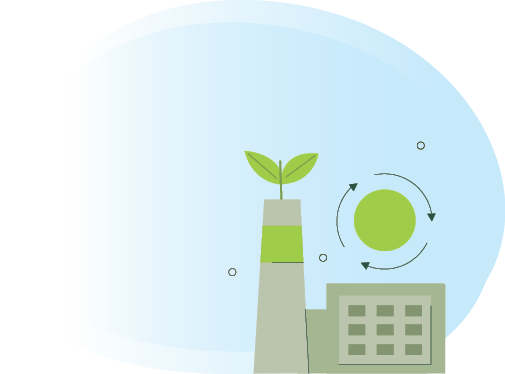
Firm Renewables – An Opportunity for India
Our solutions are crafted for the context of India, its resources - water, wind and sun that can be harnessed to power its growth within the carbon budgets. India set a target of 500 GW of Non-Fossil fuel-based energy by 2030. India’s Solar and Wind generation capacity and its cost effectiveness is amongst the best in the world. However, the present electricity architecture in India, about 407.79 GW installed capacity and 210 GW peak demand, is characterised by low flexibility and high cost, due to the dominant share of coal and infirm renewables. To improve the electricity generation-supply flexibility and to generate the power at a lower cost, it is imperative that the country instals Stand-Alone, Make-in-India, Long duration storage capacity and morph the Renewable Power to Round-The-Clock. Further, to attain the target of 500 GW of Renewables by 2030 and to deliver lower cost of power, it is imminent to establish long duration, Make-in-India pumped storage capacity of 30- 50 GW, well before 2030. The storage capacity enables time-shift of power and can be designed to deliver flexible time shift to deliver demand following or 24x7 or dispatcahble power. Generation of more firm RE supported by long-duration pumped storage creates space for additional RE capacity and its effective operation. It also sets a benchmark of achieving less than USD 50 per kWh carbon free energy against the global markets.
McKinsey, the knowledge partner of Global Long Duration Energy Council, concludes that the deployment of long duration energy storage is essential for balancing the grid through its decarbonisation and it minimises social and environmental cost. Further, their analysis places Pumped Hydro Storage as an attractive and viable option in the context of India.
The new flexible electricity architecture augmented with low-cost, long-duration and Make-in-India Storage in sync with RE, decarbonises India’s power sector and will drive the cost of power down by 20% in the next few years. Intermediate or lynchpin solutions of providing firm hybrid power with a component of RE, is not in sync with long-term goals of the country and the business. Such solutions, in the short and medium term, create barrier for decarbonised flexible electricity architecture. Further, such intermediate solutions are not desired when the firm RE solutions are cost optimal. Reliable and affordable Round-The-Clock RE, could be used by industries to substitute 70-80 GW of captive power plants in the next few years. The industries in India with access to effective means of decarbonisation, would be the supplier of Green Commodities (Green Metals, Chemicals etc.) and hence a preferred supply chain partner for the global business.
Further, for India becoming the destination for Global supply chains, it is important that SMEs and Commercial Enterprises should have access to Carbon Free Energy. The state utilities may take initiatives and make necessary regulatory moves to make their state/ city an attractive destination for global businesses racing-to-zero.
As the cross-border adjustment mechanism are adopted by more nations, the trend of global supply chains concentrating in geographies with cost-effective decarbonisation infrastructure will accelerate. The Global Supply Chains with ‘Net Zero’ goals will prefer ‘Make-In-India’ due to low cost and low carbon electricity amongst other factors.
Decarbonising Industry
The RE-Electrification viz., electrifying energy and all electricity being renewable, is the first option in industrial decarbonisation. However, this has a limitation and much of industrial processes are hard-to-abate as significant part of the GHG emissions are not of energy origin. Net Zero molecules can address such components of GHG emissions. Firm Renewables could be deployed for the manufacture of cost-effective Zero carbon molecules in India (hydrogen, ammonia etc.) for variety of use cases in industry and transportation. Greenko is building a manufacturing facility with two-gigawatt capacity of alkaline electrolysers. In addition, Greenko is setting up manufacturing facilities for making green hydrogen and derivatives like Green Ammonia and other Green fuels/chemicals. By 2026, we will have 3.1 MT capacity of annual Ammonia manufacturing. The cost-effective Zero carbon molecules will not only substitute imports to support ‘Aatmanirbhar Bharat’ but could power the decarbonisation of many OECD countries who have declared Net Zero ambition.
Circular Economy Approaches
We need to reimagine the ways we generate and deliver goods and services. The circular economy that closes the production consumption cycle has significant potential of GHG emission reductions to reach the Net Zero and to achieve ambition of Paris Climate Agreement. And we, at Greenko, as this report unravels, have made significant advances in circular business models, extending the life and managing the end-of-life of our assets. We have begun our engagement with solar panel and other equipment suppliers on end-of-life management. We continued our new initiative of modernising and reengineering wind turbines to extend life. More importantly, our new projects in pumped storage and Energy Storage Cloud are ‘sharing models of circular economy’ delivering firm and flexible electricity and ‘electricity plus’ services to various stakeholders of the electrical system. We have joined with C-MET - a research laboratory of Ministry of Electronics and Information Technology, to establish Centre of Excellence in Electronic Waste Recycling. Recycling and Repurposing PCB, Li-ion battery, Permanent Magnet and Solar Panel are the areas targeted for technology development by 2025.
Co-Creating Solutions for Decarbonisation
Partnering amongst actors in the industrial ecosystems is critical for accelerated decarbonisation. Also, the investment and resources required and to address the ambition of Paris Climate Agreement, can only be ensured through partnerships. Greenko partnered with manufacturers of metals in different models - fit to the context and purpose - to provide them with carbon free energy. The partnerships with RE generators included providing them with “storage” and “energy cloud” services while they fulfil the power supply contracts with their customers. We are joining hands with an oil & gas major to harness expertise, infrastructure and market access to manufacture and supply green molecules. Commodity traders with access to capital and markets are joining with Greenko to take advantage of unique green hydrogen architecture of Greenko.
Greenko, from its inception, has been contributing to sustainable development and its scale and extent have changed as it progressed. Presently, the Company’s scale and size; expertise and access; make it possible to address the challenge of powering India’s growth with clean, reliable, and affordable electricity and to achieve energy security and financial stability
As value chains decarbonise, actors along the chain must realign or restructure. This presents opportunities for new partnerships and co-creation.
Contributing to UNSDGs
Greenko, from its inception, has been contributing to sustainable development and its scale and extent have changed as it progressed. Presently, the Company’s scale and size; expertise and access; make it possible to address the challenge of powering India’s growth with clean, reliable, and affordable electricity and to achieve energy security and financial stability. Our business model is designed to contribute to 5% of India’s decarbonisation goal. It directly contributes to UNSDG 13-Climate Action, UNSDG 7-Affordable and Clean Energy, UNSDG – 11 Sustainable Cities and Communities and UNSDG 12-Responsible Consumption and Production Goals. We are strengthening our contribution to SDG 9 which has a mission- “Build resilient infrastructure, promote inclusive and sustainable industrialisation, and foster innovation”. In this reporting period, we have taken multiple initiatives to support R&D and Engineering/ Technology Education that supports sustainable industrialisation. We are proud of our initiative to establish the “Greenko School of Sustainability and Climate Change” at IIT Hyderabad which heralded doctoral and post graduate programs in Sustainable Engineering/ Science and Technology. Encouraged by Ministry of Education, Government of India, this school will be an instrument in making India a S&T knowledge and skill base for pursuit of Global Net Zero Goals. We recognise that the planet is at the brink, as argued in the ‘Living Planet Report 2020’, and we must re-envision our relationship with nature. We will contribute to the conservation and restoration of nature at our sites and across the interconnected planet.
Investors across the globe are excited about the multitude of benefits that firm and flexible RE presents. Further, decentralised decarbonisation solutions using cost-effective green hydrogen and zero carbon molecules would disrupt the legacy production systems but create wealth for many countries, including India. The investor conviction and trust in the purpose and strategic direction of our business, is evidenced by the infusion of 980 million USD equity into our Company and the successful issuance of green bonds of 750 million USD. As always, Greenko will address investor expectations to the letter and spirit. The policymakers and regulators have recognised the opportunity in this new energy transition for India and are architecting a new energy policy ecosystem to incentivise #AtmanirbharBharat and #MakeinIndia.
Through the report, you may have already noticed the convergence of multiple initiatives towards organisational development, which is critical for successful Greenko 4.0. The empowerment model and People-Process-System are now supplemented and reinforced by the spread of a) Integrated Thinking which aligns each employee to the organisation’s financial and extra-financial goals; b) Innovation Hub architecting pathways for doing things in different ways; c) Digitalisation helping the seamless flow of information and analytics; d) Assurance of systems and processes to ensure that the organisation adheres to standards and quality, and finally e) Customer and partner relationship focus as these groups change both in quantity and quality. Further, we are cognisant that the work and life are transforming. We are exploring organisational transformation that synchronises professional and life pursuits in a connected world supported by intelligent information networks.
Supporting the Living Planet
Greenko is committed to conserve one endangered species, each year, in the regions of its operations. During the last few years, it contributed to conservation initiatives of Olive Ridley Turtles in the coast of Andhra Pradesh and Odisha, Great Indian Bustard in Andhra Pradesh and Red Panda in Sikkim, this year it is focussing on conservation of Lesser Florican in the Madhya Pradesh by preserving and rejuvenating its habitat.
Greenko will continue to curate its business efforts to contribute towards sustainable development, being cognisant of the context in India and delivering value to all stakeholders. In this endeavour, stakeholder/s continued engagement is extremely valuable. My colleagues and I will be eager to listen to your concerns and suggestions.
 Integrated Report 2022
Integrated Report 2022


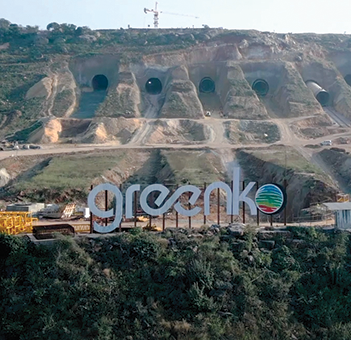
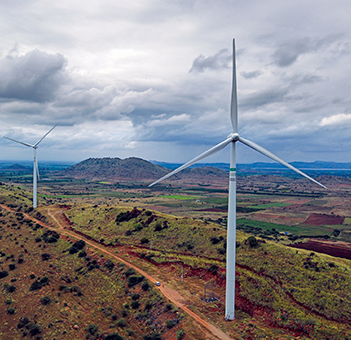
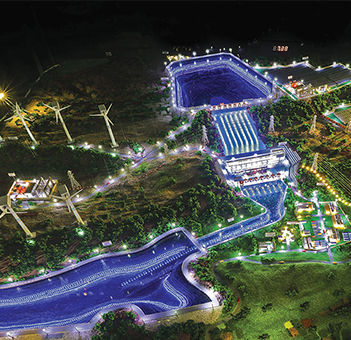
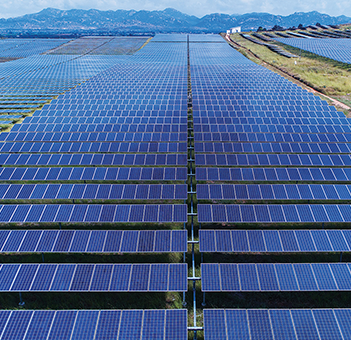
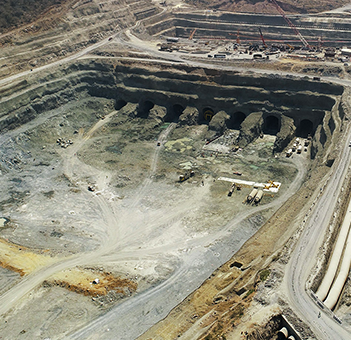

 Previous Page
Previous Page Next Page
Next Page